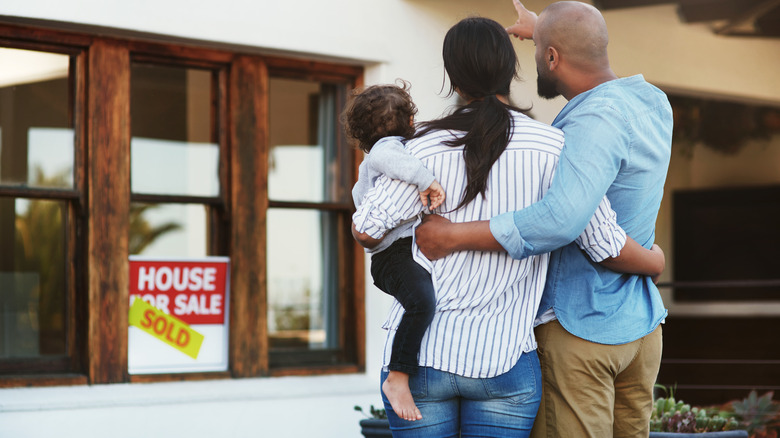This Is The Average Down Payment On A House
When saving up to buy a house, it's essential to know all the costs associated with home ownership before making your big decision. Not only will you need to consider expenses such as closing costs and real estate agent fees, one of the most significant upfront expenditures you will have to factor into your home-buying budget is the money to be set aside for your down payment.
A down payment is a lump sum toward the final cost of a home you're purchasing. Although most of the money used to buy the house is more than likely provided by a loan you've taken out with a lender, this down payment is your primary personal investment into the property. But the question is, how much should you put toward a down payment on a home?
For many years, there's been a misconception that you must set aside at least 20% of the total home purchase price for a down payment. However, this is no longer the case. There are some positives to paying a more significant sum upfront, like decreased monthly mortgage payments and the possibility of your lender rewarding you with lower interest rates, per U.S. Bank. That said, the average home down payment in the United States may be far less (and more within your reach) than you think.
The average down payment is far less than 20%
Having a solid credit score, an emergency savings fund with up to six months' worth of your cost-of-living expenses, and little to no high-interest debts such as credit cards or student loans can be a good sign that you're financially stable enough to purchase a property. These benchmarks, as well as a down payment, can work heavily in your favor when you go to buy a home.
With regard to the down payment, the national average in the United States for a primary residence is around 13%, according to Realtor.com, although first-time buyers set aside far less at around 6% to 7% (via National Association of Realtors). However, there are some programs, like home loans insured by the Federal Housing Administration (FHA), where you only need a 3.5% down payment (and to meet other standards) to qualify for financial assistance.
When looking at down payment costs in the U.S., it's also essential to consider the average price of properties in the state you choose to live in. For example, if you want to save 3.5% to 6% for a down payment on a home in West Virginia, where the median home value is $296,000 (via Redfin), you're looking at tucking away between $10,360 to $17,760. However, if you're searching for more tropical surroundings in Hawaii, where the median home value is $712,300 (via Redfin), you should aim to save anywhere from $24,930 to $42,738 to put down on a home.

